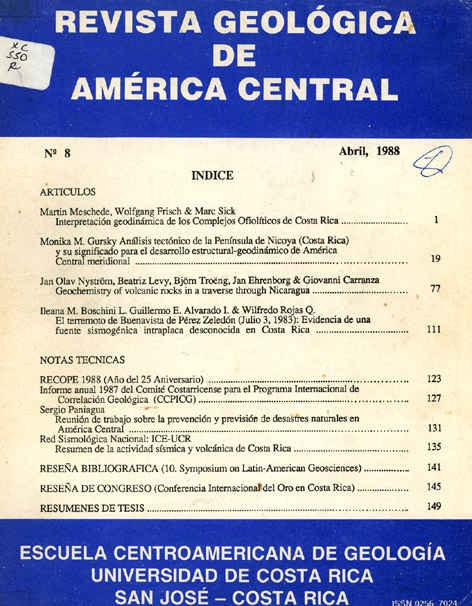Abstract
The southern Central American crustal segment underwent genetically complicated and polyphase events, before the actual isthmus formed. The lowermost unit of the Nicoya Peninsula is oceanic crust formed in a Pacific active ridge (Lower Nicoya Complex). This unit, overlain by deep-sea radiolarites, was transported by sea-floor spreading to its actual geotectonic position. NW-SE compression of the Central American-Caribbean region between the Nort and South American plates caused on the hand the first compressive deformation (D1: post-Albian/pre-Campanian) and on the other, conduits for the ascense of basaltic magmas (Oceanic Series of the Upper Nicoya Complex); the lattermay correlate to the Great Flood-Basalt Event of the Caribbean. Consequently, subdution of the Pacific sea floor under the western margin of the magmatically thickened Caribbean plate started. This process caused a pressure to the NE which resulted in the second compressive deformation (D2: Campanian); and contemporaneously, early island-arc volcanism was initiated which is, in the Nicoya Peninsula, only represented by its primitive extension (Primitive Island-Arc Series of the Upper Nicoya Complex). Volcanism and subduction slowed down or ceased in the lower Tertiary. Another compression of the southern Central American isthmus between North and South America resulted in the third deformation (D3: Eocene). Intensified pressure of the Pacific plate and rejuvenation of the subdution caused the fourth deformation (D4: Miocene) and the formation of the Tertiary to recent island arc in the isthmus. The tectonic style (i.e. open, large-scale folding and fracture tectonics), indicate little crustal shortenings and a tectonic level close to the surface.##plugins.facebook.comentarios##
Downloads
Download data is not yet available.






